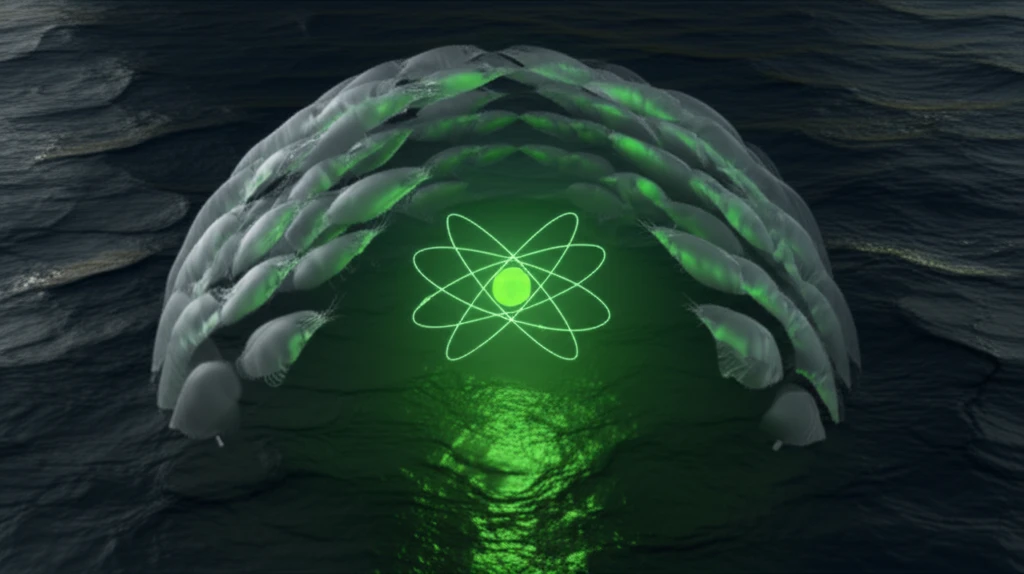
Shell-Shocked? How Krill Could Help Clean Up Nuclear Waste
"Turning biowaste into a powerful tool for uranium removal."
The rapid expansion of nuclear industries has brought with it a concerning issue: the potential for radioactive wastewater to contaminate our environment. Uranium, a highly toxic radionuclide, poses significant risks when released into aquatic ecosystems. Therefore, finding effective and sustainable methods to remove and contain uranium is crucial.
Current strategies focus on extracting uranium from water and binding it to solid materials, aiming to prevent its spread. While various materials have been explored for this purpose, many have limitations, including potential instability and the risk of uranium leaching back into the environment. The need for cost-effective, stable, and readily available solutions is greater than ever.
Now, researchers are exploring an unexpected source: krill shells. These shells, a byproduct of the krill harvesting industry, are often discarded as waste. However, a recent study reveals that krill shells possess a remarkable ability to bind and immobilize uranium, offering a dual benefit of waste reduction and environmental remediation.
Krill Shells: A Phosphorus Powerhouse for Uranium Capture

The key to krill shells' uranium-binding ability lies in their high phosphorus content. Phosphorus compounds have long been recognized for their affinity to uranium, forming stable, insoluble precipitates. This process effectively locks the uranium in place, preventing it from migrating through the environment.
- High Sorption Capacity: Krill shells demonstrated a significant ability to absorb uranium from water.
- Nanoscale Transformation: Uranium was transformed into nanoscale precipitates on the shell surface.
- Phosphorus-Dependent Sorption: The distribution of uranium closely matched the distribution of phosphorus, indicating a direct relationship between the two.
- Chemisorption Mechanism: The binding process involves a chemical reaction between phosphate groups in the krill shell and uranium ions, leading to the formation of stable uranium-phosphate compounds.
From Waste to Wonder: A Sustainable Solution
This research highlights the potential of transforming a problematic biowaste into a valuable resource for environmental cleanup. By utilizing krill shells for uranium immobilization, we can reduce waste, lower remediation costs, and develop a more sustainable approach to managing radioactive contamination.
The study's authors emphasize that natural krill shell waste shows promise as a cost-effective sorbent. Further research is needed to optimize the application of krill shells in real-world scenarios, such as treating contaminated water sources at nuclear facilities or uranium mining sites.
However, the initial findings are encouraging, suggesting that this readily available and renewable resource could play a significant role in protecting our environment from the dangers of radioactive pollution.
